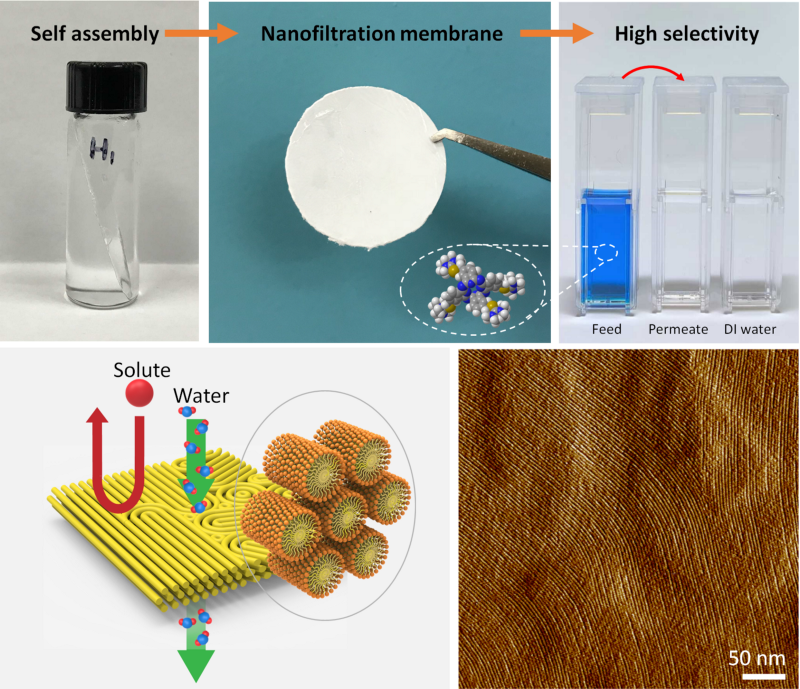How to Make a Better Water Filter? Turn it Inside Out
Penn engineers describe a novel approach for making antimicrobial nanoscale water filters while demonstrating new approaches that can be used to develop a broad range of materials.

Chinedum Osuji, Eduardo D. Glandt Presidential Professor in the Department of Chemical and Biomolecular Engineering, is an expert on how nanoscale features of soft materials influence their properties on the macroscale. Achieving structural control on the level of individual atoms and molecules is difficult enough, and soft materials present the added challenge of having atoms and molecules that can more freely shift and move.
Work in that field can have applications in the everyday world, however. In a new study, Osuji and his colleagues describe a new method for creating water filters that take advantage of those nanoscale features.
Penn Today’s Erica Brockmeier spoke with Osuji and explained his team’s findings, which were recently published in Science Advances.
When designing a nanoscale filter, engineers usually start with something that resembles a microscopic strainer or a sieve. Water travels through individual holes that are spread along the strainer and are held together by a solid material that fills the space around them.
Osuji’s group, which includes experts in modifying the chemistries of block polymers, large chains of molecules with large “blocks” of repeated sequences, found something unexpected while studying another similar material. Their discovery led them to “inverting” their design strategy: Turning the “holes” of the strainer into solid fibers, leaving the previously solid portions of the structure open.
“But if you then take a material like this, why won’t these fibrils just float apart?” Osuji asks. The group recognized that the material was comprised of something akin to a complex mesh of interconnected threads, or fibers, but with the important distinction that the space between the fibers was explicitly defined by the structure of the molecule that made up the fiber. They realized that the fiber’s seemingly random “topological interconnectedness” held the structure together while still allowing water to flow through.
Continue reading at Penn Today.
